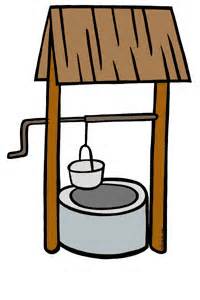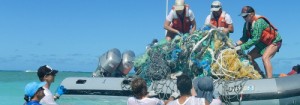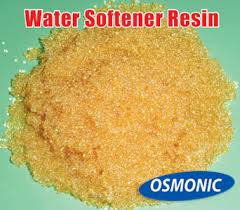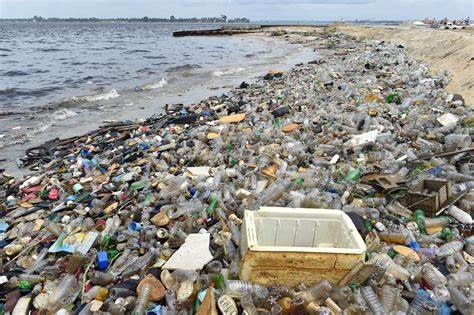Pure Water Occasional, July 6, 2019 |

As depleted lakes have refilled with the spring's over-abundance of water, the water often brings unwanted debris. Pictured above, California's Lake Shasta with welcome water but also tons of trash.
The state of Washington has given a dairy a $930,000 grant to study the feasibility of squeezing water from cow manure to be returned to rivers to help water-starved salmon. Details.
In a very surprising turn of events, researchers have found a gigantic aquifer of relatively fresh water trapped in porous sediments lying below the salty ocean. The new aquifer seems to be the most massive of such formations yet found in the world. From Massachusetts to New Jersey, the aquifer stretches from the shore and extends more or less continuously out about 50 miles to the edge of the continental shelf. According to the research, such aquifers probably lie off many other coasts worldwide and could provide desperately needed water for arid areas that are now in danger of running out. Full article from Science Times.
Around the globe, climate change is sapping hydropower’s dependability as rivers that once ebbed and flowed with seasonal regularity have grown erratic. In Brazil, record drought triggered blackouts in 2015. In California, output from dams has swung wildly from year to year. And in Europe, Spanish utility giant Iberdrola SA’s hydro output reached a record high in 2016, then plunged 57% the following year.
Although home decoration for National Garden Hose Day is still a long way from rivaling Christmas, the custom is growing. Above is a colorful Garden Hose Day display from the June 18 Garden Hose Day celebration in Baton Rouge, LA.
A test conducted by the Center for Environmental Health (CEH) concluded that a toxic level of arsenic has been found in Starkey Spring Water and Peñafiel brand bottled water—brands sold at Target, Walmart, and Whole Foods.
An environmental chemist at Texas A & M University claims to have developed an effective way to remove pharmaceuticals in urine from wastewater. Details.
Oil and Water
According to a recent article, "At any given moment there is 3 to 5 times more water being managed in the Permian Basin than hydrocarbons. It is for this reason that it is perhaps a misnomer to call the Permian an oilfield; in this unconventional age, it is as much a water field." A commonly stated truth about oil production is that oil wells "produce" three to seven barrels of water with each barrel of oil. Doublethink In The Desert: The Myth Of Recycling In The Permian Basin reveals that the oil industry is not nearly as adept at managing all this excess water as it claims.
WQA Survey Results
Americans whose households rely on well water are far less concerned about the quality of their water supply than those using municipal water, according to the 2019 Water Quality Association Consumer Opinion Study. The study also shows more well water drinkers consider in-home water filtration a necessity rather than a luxury. Three-fifths of the people on well water said they consider their water safe (60%), versus half of the respondents on municipal water. Almost one-third (31%) on well water have little concern about their water, while 23% on municipal water have little concern. A public summary of the study is available to anyone on WQA's website.
UPI reported that large areas of Florida's Everglades could be under water by the time a multibillion-dollar plan to restore the region is finished, according to a University of Maryland researcher. At stake is not only a national park and a home to unique wildlife, but also a flow of fresh water that helps to replenish drinking water aquifers for the Miami area — home to millions of people. If rising seas doom a plan to restore the area, all of that could be threatened.
A paper published in the Journal of Dental Research in March of this year revealed an astonishing 8-fold increase in dental fluorosis in the United States as compared with the previous national survey covering 1999-2004. Details.
"Water is becoming a coveted currency. As a basic need that is increasingly scarce in some regions due to climate disruption and abusive industrial and agricultural practices, it is the new gold that the wealthy want to get their hands on. Companies like Nestlé and even drug gangs in Mexico are harnessing the profit and power potential of water, with trails of violence and corruption left in their wake." Read the full article about how privatized water systems work in Puebla, Mexico.
|
Glyphosate, known better as Roundup and sold under several other brand names as well, a product of Monsanto, has been around since 1974. It is a potent and popular herbicide, registered for use in 130 countries. The world consumes more than 720,000 metric tons annually, so there is plenty to get into water. Glyphosate was detected in 36% of stream samples from 9 Midwestern US states as far back as 2002.
Although Roundup has always been viewed with suspicion, there has been little evidence that it poses a cancer risk to humans. Recent studies, however, have shown mixed results. Currently, the EPA sets its MCL at 700 parts per billion. The World Health Organization concludes that regulatory guidelines are not necessary because it poses low risk in drinking water.
Despite such assurances, most prefer not drinking Roundup. There are many options for getting rid of it. These include chlorination, ozonation, nanofiltration, reverse osmosis, and filtration with granular activated carbon.
Reference: Water Technology magazine, July, 2016.
Gazette Afternote: In August of 2018, a California jury found Monsanto liable in a lawsuit filed by a man who alleged the company’s glyphosate-based weedkillers, including Roundup, caused his cancer and ordered the company to pay $289 million in damages. This case has certainly cast doubts on the “low risk” assessment. As early as 2015, the World Health Organization’s cancer arm classified glyphosate as “probably carcinogenic to humans.”
|
Should You Test Your Well?
|

Editor’s Note: The article below is adapted from a 2013 Water Technology article by Jake Mastroianni. — Hardly Waite.
There are many things in life that are taken for granted, the quality of one’s drinking water should not be on that list. Well water testing, is a great way to get that sense of clarity about one’s water.
There are several different suggestions for when you should test, who should do the testing, why you should test, where you should test and what type of treatment to use if the testing comes back with negative results.
When you should test
The correct time sequence for testing varies based on different testing equipment, the type of well, and location. The Environmental Protection Agency says private well owners should have their water tested at least once a year.
Mike McBride, marketing manager for Industrial Test Systems Inc., agrees with that concept. “Customers should have well water tested once a year,” he notes. “Immediately test if there is a noticeable change in the water’s taste, smell or appearance.”
Obviously, if there is a noticeable difference in a customer’s water supply, it would be a good time to have a water test performed. There are also precautions when installing new wells.
“We recommend having a complete series of tests run on a new well,” says Charlie Gloyd, market manager for water conditioning at LaMotte Company. “Depending on the results, we recommend that a new well be monitored quarterly for the first two years of operation. If the well is in good shape, continue to monitor every six months to a year.”
Marianne Metzger, business manager for National Testing Laboratories Ltd., also offers some advice on new and inactive wells. “For new wells, or wells that have sat inactive for many years, a comprehensive test should be considered to document the water quality. In addition to the typical analysis of bacteria and nitrate, new wells should be tested for volatile organic chemicals, pesticides and herbicides, heavy metals and radiological levels. Having a comprehensive test done can alert you to problems as well as provide a baseline of water quality for that well in which to compare future results,” she says.
Who should perform the test
While many tests can be performed by the well water owner, tests should be performed by a competent professional when looking for contaminants that could cause health issues.
“Testing for health based contaminants like bacteria, nitrates and arsenic should be done by a certified laboratory,” adds Metzger. “Simple aesthetic contaminants like hardness and iron can be tested on-site by a water treatment professional or with a do-it-yourself home kit.” Metzger emphasizes the fact that having a professional, or even laboratory, perform a complete analysis is the best way to get the most accurate results.
“Some local health departments do testing or can recommend either certified local or regional companies to perform the testing,” says Gloyd. After testing is complete, Gloyd adds that the homeowner or local water treatment company should be able to monitor the water quality.
Why you should test
There are several contaminants that can unknowingly enter the water supply and cause health issues.
“Parameters that should be tested every year include bacteria (total coliforms), nitrates, total dissolved solids and pH levels,” says McBride. “The nitrates test is extremely important before giving well water to a newborn baby. High levels cause a potentially fatal disease called ‘blue baby syndrome.’ Homeowners should also test for arsenic, chloride, hardness, pesticides and metals.”
Bacteria is one of the most common problems found in wells, coming up in 40 percent of private wells tested, according to Metzger.
Here is a list of reasons provided by our experts for why wells should be tested:
- If you have replaced any part of the well.
- At a minimum check pH, iron and total Coliform bacteria.
- If the well is in a rural or agricultural area it is a good idea to check for nitrate, nitrite, arsenic and perhaps pesticides.
- If you notice a significant change in water quality like color, taste or odor.
- Flooding, earthquakes and fuel spills in your area could disrupt well water.
Probably we should add nearby oilfield activity, either drilling or fracking, to the list.
Where you should test for certain contaminants
The location of a well can play a huge factor in determining the type of testing that should be conducted. In different parts of the country some contaminants may be more prevalent than others.
“Your local health department will be able to suggest other potential contaminants based on the locale, such as cadmium, manganese, radon, chlorides, etc.,” says Gloyd. “Secondary factors that are not typically a health risk are copper, hardness, sulfide, total dissolved solids (TDS ) and others, as they can affect palatability.”
What are common problems and treatment options
“The most common problems in wells that require treatment include bacteria, pH, manganese, iron and nitrates,” says Gloyd.
As Metzger mentions, bacteria is one of the most common contaminants found in wells. “The most cost effective way to deal with bacteria is to shock disinfect the well using a chlorine solution,” she notes. “Most health departments will recommend using household bleach, due to its availability and cost, but it would be better to use something that has been NSF approved for use in drinking water.”
Gloyd adds that testing can vary and he recommends asking a local water treatment professional for the best treatment solutions.
More permanent forms of disinfection for water wells include ultraviolet light or a continuous chlorine feed. Reference: Water Technology.
|
Common Uses of Ion Exchange Resins in Water Treatment
|
Ion exchange resin has been an effective water treatment tool for many years. The most common use, by a long way, is for water softening. Ion exchange resins, however, have many other less frequently used applications. Resins are used to reduce arsenic, nitrates, uranium, perchlorate, and more. They can also “deionize” water completely, removing the full mineral content.
Standard Ion Exchange Resins
Cation resins exchange positive ions and Anion resins treat negative ions.
Here’s a chart showing types of resins and many of their uses:
| Resin Type |
Use |
Discussion |
| SAC – Strong Acid Cation |
Water softening, iron reduction, barium and radium removal. |
Exchanges for sodium ions. |
| WAC – Weak Acid Cation |
Softens water (removes calcium and magnesium), reduces TDS mildly, and reduces alkalinity. |
Has the often undesirable effect of lowering pH. |
| SBA – Strong Base Anion |
Reduces nitrates, arsenic, perchlorate, TOC (Total Organic Carbon), uranium. Can also be used as an antimicrobial disinfectant. |
Special grades with selectivity built in are often used. |
| SBC and SBA together. |
SAC and SBA resins employed in combination either individually or mixed together can be used to reduce minerals and TDS in water. |
The process is known as deionization (DI) or demineralization. The media can be placed in the same tank or in separate tanks.
|
|
Indebted to “Ion Exchange Resins and Their Applications,” Water Technology, Nov. 2015. |
Garfield Phone Ocean Pollution Case Solved
|
|
Since the 1980s pieces and parts of a bright orange novelty telephone depicting the cartoon cat Garfield have been appearing on beaches in Brittany in France. Not just an occasional phone. A lot of them.
Until early 2019 the origin of these phones was a mystery. According to the BBC, the mystery was finally solved when a lost shipping container filled with Garfield phones “in a more complete condition than any found before them,” was discovered in a secluded sea cave accessible only during low tide. Unfortunately, the location of the lost shipping container makes recovery virtually impossible, so the Garfield phones are expected to continue to land on Brittany’s shores for years to come. Locals apparently are sick of picking them up. The seemingly endless supply illustrates how many small objects can be crammed into a single cargo container.
Incidents like the Garfield phone event have contributed to the belief that lost shipping containers are a major cause of ocean pollution.
Are wayward containers polluting global waterways at alarming rates?
Most of the time there are about 6,000 container ships active on the world’s seas and waterways to facilitate global trade. Lost containers represent only about one thousandth of 1 percent of the roughly 130 million container loads shipped each year, according to the World Shipping Council (WSC), which publishes results of a member survey every three years. According to the WSC:
For its 2017 report, the latest available, WSC gathered data for 2014-2016. The average annual number of containers lost at sea, excluding catastrophic events, was 612 during the period. That number is down about 16 percent compared to the average of 733 units lost each year for the previous three-year period. When catastrophic losses are included, defined as 50 or more containers in a single incident, the total number of containers lost at sea averaged 1,390 annually for the most recent period. That’s still a 48 percent reduction from the average annual losses of 2,683 estimated during the previous three-year period.
By comparison, an estimated 8 million metric tons of plastic pollution — a substantial amount from single-use plastic bottles and grocery sacks — finds its way into the oceans each year.
Clearly, though a thousand plus gigantic shipping containers lost at sea annually can spew out a lot of weird telephones and other assorted debris, the amount of garbage they dump into the seas seems small when compared with the ongoing rivers of plastic put forth daily by everyday human activities.
|
This plastic is not from a lost ship container but from humans going about their daily business. |
Residential water filters and reverse osmosis units normally use filter carbon in some form, and the carbon used in residential units is normally new carbon. There is no program, to our knowledge, that recycles filter carbon from small household filter cartridges for reuse as filter carbon. Over the years some vendors have advertised recycling of spent filter cartridges, but these programs were, in our view, more about marketing than recycling, designed to appeal to environmentally conscious customers and to promote cartridge replacement sales. Recycling of small cartridge carbon is simply not economically feasible.
However, carbon recycling does happen, and in a big way, with large industrial and municipal filter applications.
Here’s an interesting account of how carbon recycling works, from the Calgon Corporation, a major provider of filter carbon.
What should treatment operators know about the differences between virgin and reactivated GAC when evaluating options for PFC removal?
Although virgin and reactivated GAC may be of the same starting material and same activity level, they are two distinct products. Virgin GAC is an activated carbon product that has not been used in a previous application, so its quality and performance are consistent. Reactivated GAC is a product whose capacity was exhausted (spent) in a previous application and has undergone a high-temperature thermal process to destroy adsorbed material (remove contaminants) and restore a majority of the adsorptive capacity that allows the product to be reused in appropriate applications. The reactivation process alters the pore structure and can impact performance/quality, but can still provide a cost-effective treatment solution.
Within the term “reactivated GAC” it is also important to distinguish between a custom-reactivated GAC and a pool reactivated GAC. A custom-reactivated GAC is a product that has been previously used and spent in a specific customer’s application, removed from service, segregated from other spent GAC, reactivated, and returned to the same customer for reuse. In a pool reactivated product, spent carbons from a variety of customers’ applications are co-mingled, reactivated, and used for a variety of non-potable applications. The quality of a custom-reactivated product is generally higher than the quality of a pool-reactivated product, but is highly dependent on the application in which it was used, the reactivation conditions, and the initial carbon product. Custom reactivation is most economical for quantities above 20,000 pounds. It is vital to select a virgin material that can withstand multiple cycles of treatment and reactivation. A reagglomerated, bituminous, coal-based product has been shown to be a superior base product for reactivated GAC.
|
Your Drinking Water May Harbor Cancer-Causing Nitrate
By Steven Reinberg
|
Millions of tons of nitrate from industrial farming find their way into America’s drinking water each year, causing thousands of cases of cancer and other health problems, an environmental advocacy group says.
In a new report, researchers from the Environmental Working Group (EWG) quantify the risk. They say nitrate is responsible for nearly 12,600 cases of cancer a year.
“Industrialized farming relies heavily on nitrate fertilizers that can run off into the water table used by drinking water utilities,” said Sydney Evans, a science analyst at EWG.
The risk varies from region to region, she said, noting that many small farming communities have the highest nitrate levels in their water — and the highest risk. Iowa and California, two heavily agricultural states, were found to have the most nitrate-related cancer cases.
A Yale University researcher who reviewed the report said the danger it highlights is clear and exists throughout the country.
“An immediate response is warranted, so that we are not poisoning our water to produce our food,” said Dr. David Katz, director of the Yale-Griffin Prevention Research Center in New Haven, Connecticut.
The report said 80% of the nitrate-related cancers were colorectal, with ovarian, thyroid, kidney and bladder cancer accounting for the rest. Treatment costs up to $1.5 billion a year, according to the report.
Nitrate in tap water also has been tied to serious health issues for infants, the researchers said. Among them: nearly 3,000 babies with very low birth weight; more than 1,700 preterm births; and 41 cases of neural tube defects each year in the United States.
Katz said that although the study has limitations, it makes a compelling case that nitrates from what he described as “agriculture as usual” in the United States are “imposing grave costs measured in both lives and dollars.”
Meanwhile, Evans called on the U.S. Environmental Protection Agency (EPA) to revisit its public health standards for drinking water. A main mission of her group is to prevent nitrate from fouling drinking water.
Since 1962, the federal standard for nitrate in drinking water has stood at 10 milligrams per liter. The report said problems have been found at one-tenth of that level.
The EPA was slated to re-evaluate its standards with an eye to reducing the permissible level in drinking water, but the Trump administration canceled those plans, Evans said.
For tap water to be safe, she said, nitrate levels would have to be 70 times lower than today.
Nitrate is hard and costly to filter out of water, Evans said. Some towns and cities, however, do remove it and pass along the cost to residents.
Private wells can also have high nitrate levels. People who rely on well water have to spend thousands of dollars to add reverse osmosis systems if they want to remove nitrate, Evans said.
The best policy, she said, is to prevent large quantities of nitrate from getting into the water in the first place. It’s up to the government to set safe standards and make sure the farm industry adheres to them, she added.
The report was published June 11 in the journal Environmental Research.
More information
To learn more about nitrate in drinking water, visit Cornell University
Pure Water Gazette Commentary: Nitrate removal for individual homes is not as difficult or expensive as the article implies. Reverse osmosis undersink drinking water systems are moderately priced and readily available. Also, nitrate is a drinking water issue: whole house treatment is normally unnecessary.
|
Millions of tons of nitrate from industrial farming find their way into America’s drinking water each year, causing thousands of cases of cancer and other health problems, an environmental advocacy group says.
In a new report, researchers from the Environmental Working Group (EWG) quantify the risk. They say nitrate is responsible for nearly 12,600 cases of cancer a year.
“Industrialized farming relies heavily on nitrate fertilizers that can run off into the water table used by drinking water utilities,” said Sydney Evans, a science analyst at EWG.
The risk varies from region to region, she said, noting that many small farming communities have the highest nitrate levels in their water — and the highest risk. Iowa and California, two heavily agricultural states, were found to have the most nitrate-related cancer cases.
A Yale University researcher who reviewed the report said the danger it highlights is clear and exists throughout the country.
“An immediate response is warranted, so that we are not poisoning our water to produce our food,” said Dr. David Katz, director of the Yale-Griffin Prevention Research Center in New Haven, Connecticut.
The report said 80% of the nitrate-related cancers were colorectal, with ovarian, thyroid, kidney and bladder cancer accounting for the rest. Treatment costs up to $1.5 billion a year, according to the report.
Nitrate in tap water also has been tied to serious health issues for infants, the researchers said. Among them: nearly 3,000 babies with very low birth weight; more than 1,700 preterm births; and 41 cases of neural tube defects each year in the United States.
Katz said that although the study has limitations, it makes a compelling case that nitrates from what he described as “agriculture as usual” in the United States are “imposing grave costs measured in both lives and dollars.”
Meanwhile, Evans called on the U.S. Environmental Protection Agency (EPA) to revisit its public health standards for drinking water. A main mission of her group is to prevent nitrate from fouling drinking water.
Since 1962, the federal standard for nitrate in drinking water has stood at 10 milligrams per liter. The report said problems have been found at one-tenth of that level.
The EPA was slated to re-evaluate its standards with an eye to reducing the permissible level in drinking water, but the Trump administration canceled those plans, Evans said.
For tap water to be safe, she said, nitrate levels would have to be 70 times lower than today.
Nitrate is hard and costly to filter out of water, Evans said. Some towns and cities, however, do remove it and pass along the cost to residents.
Private wells can also have high nitrate levels. People who rely on well water have to spend thousands of dollars to add reverse osmosis systems if they want to remove nitrate, Evans said.
The best policy, she said, is to prevent large quantities of nitrate from getting into the water in the first place. It’s up to the government to set safe standards and make sure the farm industry adheres to them, she added.
The report was published June 11 in the journal Environmental Research.
More information
To learn more about nitrate in drinking water, visit Cornell University
Pure Water Gazette Commentary: Nitrate removal for individual homes is not as difficult or expensive as the article implies. Reverse osmosis undersink drinking water systems are moderately priced and readily available. Also, nitrate is a drinking water issue: whole house treatment is normally unnecessary.
|
Are Nitrates Taken in Through the Skin?
|
There is growing evidence that nitrates in water are a serious threat to human health, that nitrate levels in water supplies, both public and private, are steadily increasing, and that the longstanding 10 part per million regulatory allowable is way too lenient.
The bright side of the nitrate issue, though, is that home treatment for nitrates is relatively easy and inexpensive. Like many other problem contaminants, lead, arsenic, and PFAS, for example, nitrates are almost entirely an ingestion issue. Nitrates are dangerous when swallowed, but of no great concern for other household exposures like bathing, washing clothing, or cleaning.
Here’s what the World Health Organization says:
Using a multiroute exposure assessment approach (Krishnan & Carrier, 2008), it was found, on the basis of the estimated skin permeability coefficients and the air to water concentration values, that dermal and inhalation exposures to nitrate or nitrite through showering or bathing were not significant (Health Canada, 2013). WHO: Nitrate and Nitrite in Drinking Water.
Similarly, the US Environmental Protection Agency says:
Nitrates in water used for showering or bathing is not a health concern. Nitrates in drinking water above the federal standard (10mg/L) can be very harmful if ingested, so a treatment device on taps that dispense water primarily for drinking or cooking is recommended.
The Oregon State Health Authority says that high nitrate water should not be used for drinking or preparing food, but that it is safe for gardening, washing dishes, cleaning, and laundry. Bathing? “Nitrate does not easily enter the body through the skin. Bathing, swimming and showering with water that has levels of nitrate over 10 mg/L is safe as long as you avoid swallowing the water. Supervise small children when they are bathing and brushing teeth to ensure they do not swallow the water.”
The practical lesson from this is that point of use treatment for nitrates is the easy solution. An undersink reverse osmosis unit or a small undersink filter with a nitrate cartridge can provide high quality drinking water. Nitrate removal for water for the rest of the home is not essential.
|
Places to visit for additional information:
|
Thanks for reading and be sure to check out the next Occasional!
|
|
|
|  | |









